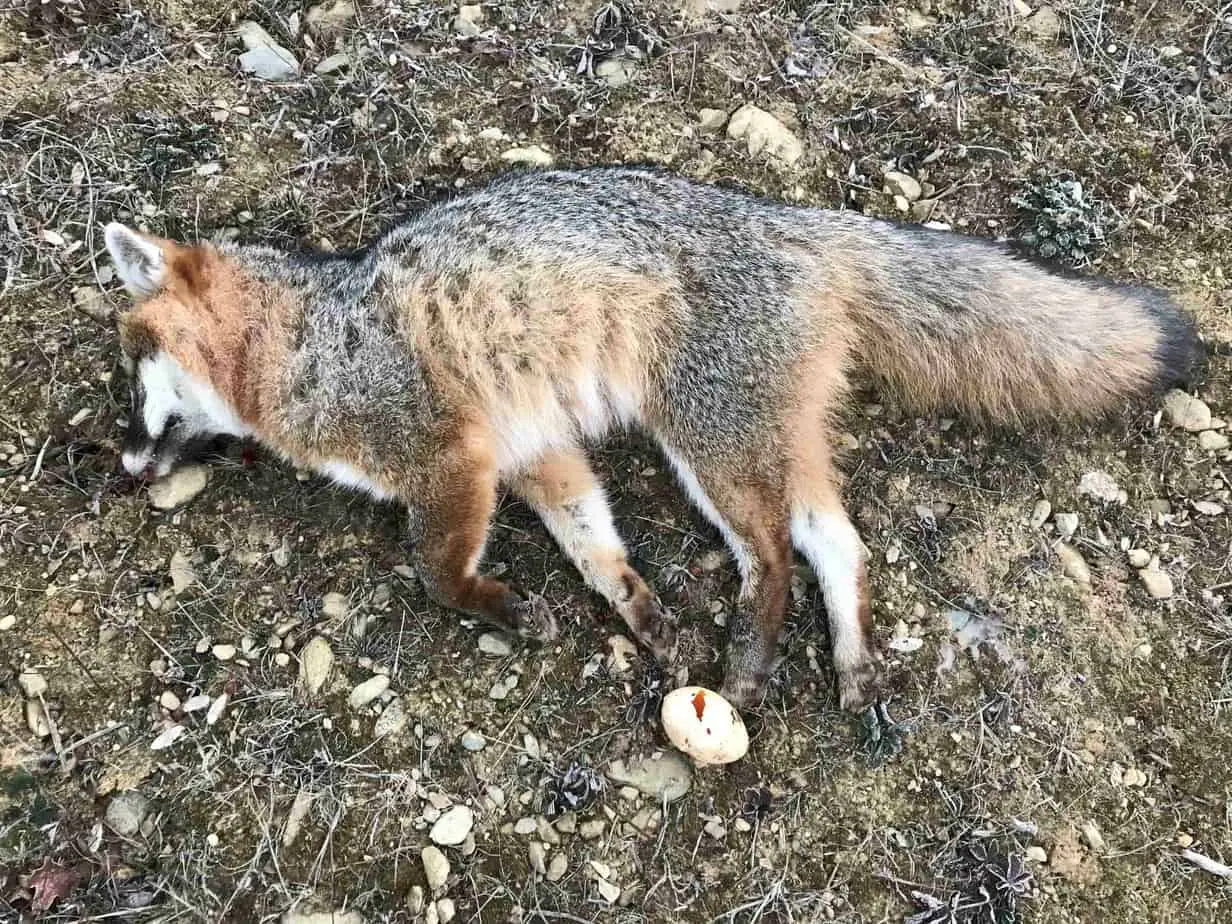Do you need to learn how to hunt predators with a shotgun?
Are you a farmer who never wanted to be a predator hunter, but they’ve been hunting you and your animals?
Did you only come here because Mother Nature has decided your farm should feed all the local fox and coyotes? At your expense.
I’ve been there, too. My coops were raided at night, and my birds were even taken in broad daylight. The time and money I spent on hatching, brooding, and raising ducks and chickens—it all ended up in the mouths of foxes and coyotes.
The shotgun was one of the tools that turned the tide.
It does, however, take a little planning and work.
Why hunt predators with a shotgun?
To be perfectly honest, solely for the sake of safety. Using a rifle on a farm requires more skill, increases the risk of over-penetration, and increases the possibility of your shot flying off somewhere no one wants it to go.
On the plus side, a shotgun is easier to operate and aim effectively.
A real-life example of the value of a farm shotgun.
One night, as bedtime neared, I had only one thing left to do before hitting the sack. My three dogs needed to go out for their last bathroom break.
Despite having two English Mastiffs to guard her, Lacey, 14 pound Shih Tzu, insisted I accompany her as added coyote security.
As we walked up the hill behind the house, I turned to look down toward the pond. A quick scan with a red light illuminated the twin fireballs of a red fox’s eyes not more than 30 yards away. Seemingly unfazed, it stood and gazed motionless at all four of us.
Without a word so as not to alert the dogs to this intruder, I jogged back to the house. I quickly grabbed my Winchester 870 shotgun. Chambered a 3 inch Dead Yote shell into the breach, flipped on the attached red scanning light and returned to the side of the hill.
The fox was gone. My dogs had casually spread out a few yards. It now appeared all was once again peaceful on my little farmstead. Undeterred, I continued to scan with the light while squeezing the Primos Mouse Squeezer taped to the shotgun’s forestock.
Within seconds, the suicidal fox came running up the side of the hill. At about 50 yards away, he realized his mistake and started to turn. It was too late. With a safe, clear shot available, I hit the fox and sent him tumbling down the hill and out of sight.

Get away from the barns and hunt them before they hunt you.
You, however, will want to get away from your house and barns and take the fight to them.
I know, I know, you just want to protect your animals. But you cannot win a war against farm predators with just defense. If you could, your fences, scare tape, and coops would have done the job.
You have to go on the offense. You need a plan, and you need to make a stand.
Think like a predator hunter.
Predator hunters set up stands (places of concealment where they can sit or stand), play sounds on callers that attract foxes or coyotes and bring them in close enough to shoot.
You can start by scouting the fringes and borders of your land. Look for dens and coyote and fox tracks. Once you find their travel lanes and paths, you’ll have an idea of how they approach your farm. Now find places where you can make your stand and ambush them.
Calling them in, and putting a perfectly placed bullet in them, is even easier.
Use a decoy when you hunt predators with a shotgun.
Hunting with a shotgun on a farm is done at close range. If a coyote or fox gets within 15 yards of you, your body’s movements will be an enormous warning flag. You need to fix the predator’s attention elsewhere.
I’ve burned through many of the commercial predator decoys over the years. The only one with legs (literally) that have stood up to the test of time is the Mojo Outdoors Critter Predator Hunting Decoy. It’s nothing fancy; complexity and striking features often led to the early deaths of other callers, but it works.
Please note: If you make a purchase using a link I provide, I may receive a small commission at no extra charge to you. Thanks!
I have also found some cheap, insanely effective decoys lying around the home and garden or in the duck and chicken coops.
The first was a low-priced laser pointer for the dogs. If your stand is high enough above your caller, you can dance that laser all around the ground around it. I’ve killed coyotes who’ve jumped and laid down on the beam and taken foxes slowly stalking it up the side of a hill.
Flitting hummingbird garden decorations have lured in predators using nothing but their solar power lights at night and mesmerizing bounce and spinning motions during the day.
A few bad duck and chicken eggs scattered around the caller have been the last meals of many foxes and not a few coyotes. But, cracked slightly open, most predators wouldn’t notice you if you got up to pee and came back before shooting them.

Use whichever lure you choose, but use a decoy!
An iron bead beats even a red dot when shotgun hunting predators.
Since you are simply protecting farm animals, you can take off the scope if you are using an old deer hunting shotgun. The close-in nature of shotgun hunting predators requires lighting quick target acquisition. Magnification is your enemy when your target is 50 feet away. Imagine finding the bullseye painted on the side of a speeding bus through a three-foot-long cardboard tube. Now try it with the bus passing by only 15 yards away.
At low magnification and broad fields of view, red dots are nice, but there’s that damn complexity again. Batteries die, guns get knocked around and dropped. Switches get flipped on and off at just the wrong moment.
Pattern a red scanning light and your shotgun together.
Adding a simple red light to your shotgun allows you to hunt predators in the dark. I made my first serious dent in the local fox and coyote population by simply scanning my property just before dawn and just after sunset every day.
A red scanning light at night can serve two purposes. The first and most obvious is to help you scan for and detect predators. When the light sweeps over them, their eyes will glow like little balls of fire.
The second, almost unheard of, is to target your prey.
For farm protection (or if you are a new predator hunter), limit your maximum range to 50 yards. Then, after patterning your shotgun for this range, turn on your scanning light and adjust the beam to barely circle the pattern.
With this red circle, you’ll use less time acquiring your target as you raise the weapon to your shoulder. Yes, the bead will still be visible for aiming, but all you need to do is bathe and track the predator in the light.
For that super close predator flashing by a few feet ahead, the light takes less than half the time to find as the bead.
Read my full story and learn everything you need to know about red and gray fox hunting at night!
Best weapon and ammo when you hunt predators with a shotgun?
Farmers and predator hunters should equip themselves with a weapon powerful enough to take down their biggest target. In general, that means a 12 gauge, semi-automatic shotgun (for faster follow-up shots on wounded animals or pack animals appearing in multiple numbers).
As for ammo, for wolves, you’ll need double-aught (00) buck. Coyotes are tough too, but No. 4 buck in a 3-inch shell gives you 41 pellets of brutal knock-down energy. Toss a modified choke on the end of your shotgun, and pattern it on a target until you get 20 or more evenly distributed pellets inside a 30” circle.
Yep, there’s better ammo. Of course, there is plenty of fancy, brand-name shotshells to choose from, but this article is for farmers forced to become new predator hunters. Save some money, but the cheaper stuff.
Looking for an affordable and easy to use hand caller? Try https://www.rushcustomcallers.com. This caller is great for first timers and built to last forever. Not sure, watch Brian Rush show you how to use a closed reed caller.
Shotgun hunting predators is a cheap way to save livestock.
Farm protection with a shotgun costs almost nothing. At the most, you’ll need a red light to scan with and some No. 4 buck.
All of which, even if you don’t end up becoming a full-fledged predator hunter, turns your shotgun into a farm defense tool.
Good luck!

